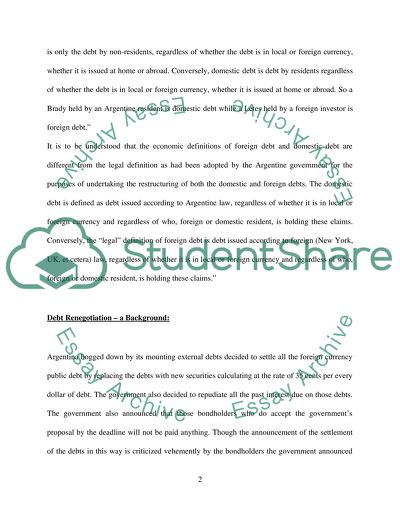Cite this document
(“Argentinas Foreign Debt Restructuring Essay Example | Topics and Well Written Essays - 4500 words”, n.d.)
Retrieved from https://studentshare.org/politics/1533506-argentinas-foreign-debt-restructuring
Retrieved from https://studentshare.org/politics/1533506-argentinas-foreign-debt-restructuring
(Argentinas Foreign Debt Restructuring Essay Example | Topics and Well Written Essays - 4500 Words)
https://studentshare.org/politics/1533506-argentinas-foreign-debt-restructuring.
https://studentshare.org/politics/1533506-argentinas-foreign-debt-restructuring.
“Argentinas Foreign Debt Restructuring Essay Example | Topics and Well Written Essays - 4500 Words”, n.d. https://studentshare.org/politics/1533506-argentinas-foreign-debt-restructuring.


